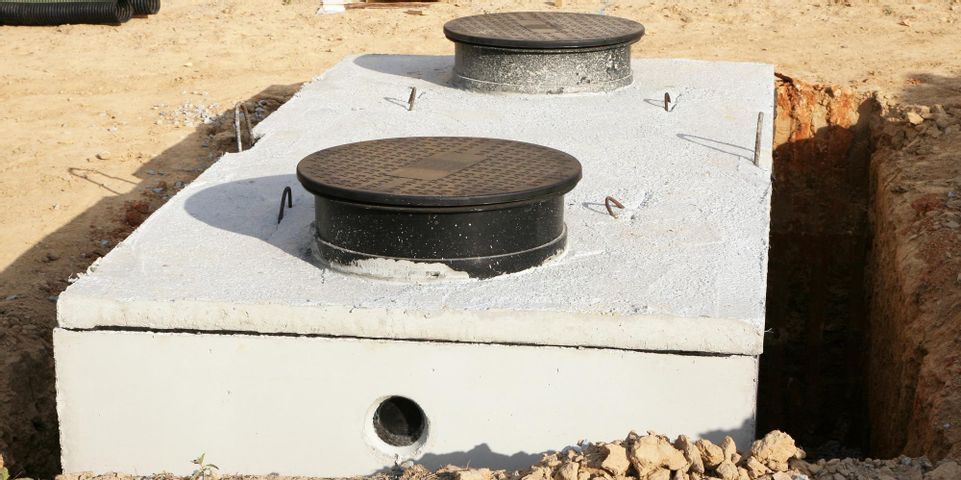
Septic tanks are underground structures that are used to treat wastewater. They’re most commonly found in areas that don’t have a central sewer system, like rural communities. Septic tanks take in water that traveled through a bathroom, kitchen, or laundry drain and expel it so it can be reused. Read on to find out how yours works.
Contents of a Septic Tank
A septic tank is made of a thick, strong material, like concrete or steel. The tank is buried deep underground and is usually able to hold 500-1,000 gallons of wastewater. There are two outlets on either side of the tank: one for incoming water, and one for outgoing water. As materials enter the tank, they’re separated by density. Floating debris rises, water settles in the middle, and anything heavier sinks to the bottom and is known as the “sludge layer.”
Traveling Water
 As fluids enter your septic tank, new water rushes in and displaces the water that’s presently inside. The old water runs out the outgoing end of the septic tank and ends up in a drain field, which is a series of pipes that are concealed in gravel-filled troughs.
As fluids enter your septic tank, new water rushes in and displaces the water that’s presently inside. The old water runs out the outgoing end of the septic tank and ends up in a drain field, which is a series of pipes that are concealed in gravel-filled troughs.
Final Result
As the water exits the tank and enters the drain field, it begins to be absorbed by the ground. There is no automation to the septic tank waste removal process: Water and waste simply make their way through the system and are eventually absorbed. To maintain your septic tank and ensure the absorption process continues unimpeded, you need to have it regularly pumped.
Does your septic tank need pumping? Call Taylor's Drain & Sewer Service in Lincoln, NE. They can handle everything from cracked pipes to septic tank pumping. For more information about the company, visit their website or call (402) 474-5213.
About the Business
Have a question? Ask the experts!
Send your question

